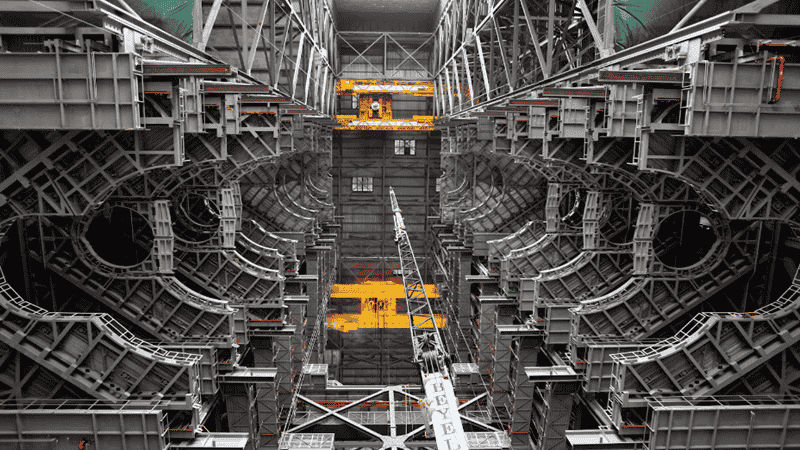Space platforms, also called satellite or spacecraft buses, are integral components of space tech that make it operational. Without a platform that hosts power supply, regulates temperature, ensures navigation, and carries out communication with the ground stations, no spacecraft would ever operate. On top of essential equipment, space platforms also carry useful payload necessary to fulfill specific mission goals. The latter can vary; for Earth observation satellites, for example, high-resolution cameras are typical payload examples; scientific spacecraft can carry other equipment, like radars or sensors.
Whatever the case, a space platform features several ‘universal’ components necessary for spacecraft operation, along with a few custom features tailored to specific missions. Below, we will discuss the essential components of a platform and explain in simple terms how engineers design a satellite.
Space Platform Design: Main Parameters
Since engineers develop space tech with different objectives in mind, no universal, one-size-fits-all platform design exists. Spacecraft structures and mechanisms often follow the same basic logic, but as we all know, the devil is in the details. Manufacturing space platforms is a complex process that includes design, testing, integration, etc. The primary goal is to ensure that a satellite can achieve its mission objectives while operating reliably in extreme space conditions. Key considerations in space platform design include:
- Mission requirements include not only the exact spacecraft type (i.e., EOS vs GPS navigation) but also the orbit, intended operational lifespan, etc.
- Payload design & testing equipment to complete pre-defined mission objectives.
- Bus design, that is, developing the supporting structure that includes power supply, communication systems, propulsion, etc.
Space Platform Systems & Subsystems

The essential systems include power, communication, thermal controls, attitude & orbit control system (AOCS), and propulsion. The exact space platform subsystems, however, can vary slightly depending on mission goals. The most common space platform equipment includes:
- Power: Today, adjustable solar arrays remain the most widespread and affordable way to power a satellite by converting solar energy. Spacecraft traveling outside the direct sun rays need to rely on batteries instead —or, more often, a calculated combination of both. Both solar arrays and batteries also need a power distribution unit to transfer electricity to different space platform parts.
- Communication: The platform communication system usually includes transponders that receive and transmit signals; antennas for radio signal reception and transmission; as well as data handling units to process, store, and transfer information to the ground stations. Some spacecraft, like emergency monitoring tech, include ‘priority’ software that determines which information to transmit first.
- Thermal control: space is an extremely cold environment so thermal controls rely on subsystems of radiators, heaters, and insulation to ensure additional protection of sensitive components from extreme temperatures.
- AOCS: depending on satellite orbit, AOCS may include gyroscopes for measuring angular velocity; reaction wheels for controlling spacecraft orientation; or thrusters for an even more advanced, precise positioning and orientation.
- Propulsion: thrusters can also serve as a subsystem to ensure space platform propulsion because they quickly react to any changes that require rapid orbit adjustment (such as potential collision with space debris). Besides thrusters, propulsion systems must also include fuel tanks to store the propellant, as well as a subsystem of pipes and valves to control its flow.
In addition to these essential space platform systems, which vary slightly by subsystem, a platform is designed to carry payloads. These include all scientific, research, or Earth-monitoring tools needed for the spacecraft to complete its mission. Such tools may include anything from spectrometers and magnetometers (used in scientific research) to atomic clocks (for navigation satellites) and high-resolution imagers (used primarily in EOS technology).
Although payloads remain mission-specific and vary between spacecraft, the systems described above largely answer the question: What is the structure of a space platform? Now, another intriguing question arises — how exactly do engineers design space platforms, and which materials do they use?
Satellite Structure Material & Design Stages
Some of the most widespread materials that can resist the harsh space environment today are:
- Aluminum alloys: widely used in space platforms because of their strength-to-weight ratio and resistance to corrosion;
- Titanium: favoured for high strength and temperature resistance.
- Carbon fibre composites: featuring a unique combination of high strength and low weight, carbon fibre is generally used in the most critical components of a spacecraft, space platform included.
- Kevlar: most commonly used in coating as a shielding against micrometeoroids, kevlar is known for its high impact resistance.
Now that you understand the basic spacecraft structures and mechanisms, it should be clear that each spacecraft is unique. The space platform powering it meets specific mission needs. Engineers build them to align with those needs. While some essential elements coincide, developing a space platform is a lengthy process. This process includes conceptual design, prototyping, testing, and integration — all essential design stages that must take place before launch.
For more info visit Business Stylish
